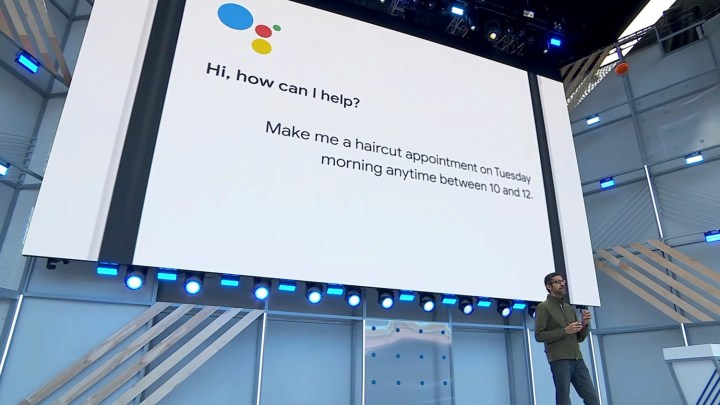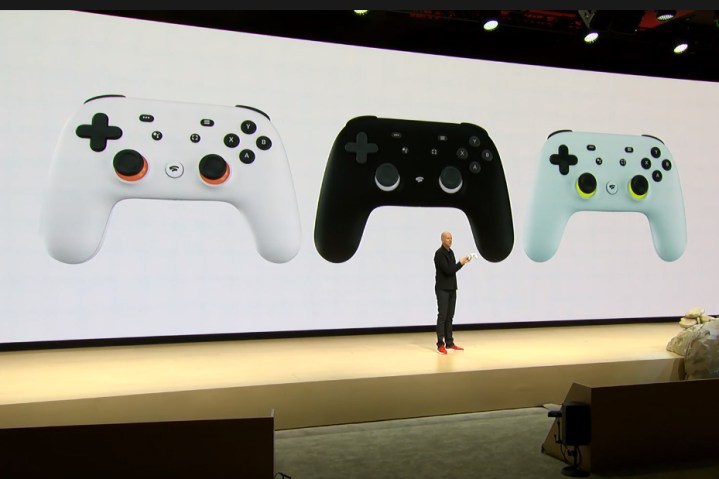
Every new year brings with it a slew of announcements from the biggest names in the tech industry, and next week is Google’s turn to shine at Google I/O 2019. For the fourth year running, the developer conference will take place at the Shoreline Amphitheater in Mountain View, California. But while the surroundings remain the same, the announcements are always different: We’re looking forward to seeing what Google has in store.
This year, things are changing a little more than usual. While Google I/O has traditionally been a place to show off Google’s latest software developments, there are hints that we may see new hardware at the show too. Here’s how to watch along — and everything you can expect to see at Google I/O 2019.
Pixel 3a and 3a XL

Google’s Nexus range was the darling of the midrange phone-loving community. Powerful, sleek, and oh-so affordable, the Nexus’ reign of terror over other affordable smartphones was put to an end when Google released the flagship Google Pixel in 2016. A lot has changed since then, but there’s still a Google-shaped hole in the midrange market that needs filling, and Google may be about to fill it with the release of two midrange Pixel devices: The Pixel 3a and the Pixel 3a XL.
While the price of the larger of the two phones isn’t known, the Pixel 3a is rumored to start from about $450, which is almost half the price of the flagship Pixel 3. As such, you can expect lower-end hardware, with the Qualcomm Snapdragon 670 processor expected in the Pixel 3a, and the Snapdragon 710 in the Pixel 3a XL. The design is reminiscent of the Pixel 3, and includes some fairly chunky bezels.
However, both phones are rumored to include the same 12.2-megapixel single lens as the flagship Pixel 3, and that could be a huge selling point for the range. The Pixel 3’s camera has cemented it a place as our favorite camera phone since its release, and while the midrange processors may limit the A.I. assistance available in the Pixel 3a, we’re extremely interested to see what Google can pull out of the bag.
The reveal of the Pixel 3a and 3a XL is close to be being a certainty. A blunder from Google meant an entry for the “Pixel 3a” was accidentally made live on the Google Store, and while it was swiftly removed, it’s confirmation the phone is coming, and that it’s coming soon.
Read more about the Pixel 3a and 3a XL
Android 10.0 Q

The new version of Android has always been the star of Google I/O, and even though a new Pixel phone threatens to steal the limelight, it’s likely Android 10.0 Q will dominate the keynote and workshops.
But what is Android Q likely to bring? The developer previews are already out, and they’ve highlighted a few great new features being baked into Android’s sweet shell. In-app “bubbles” akin to Facebook Messenger’s chat bubbles are likely to be one of the biggest features, and will allow you to see your latest notifications without leaving your currently-open app. New and deeper controls over permissions are also expected, as well as built-in support for folding phones, HDR10+, and the ability to access the depth maps in images with “portrait mode” bokeh effects. An OS-wide dark mode could also be in the works, which is good news for those who don’t like being blinded by a bright theme first thing in the morning.
Most exciting of all for Android veterans, Google is set to revamp the sharing function entirely. As anyone who’s tried to share on Android knows, the current sharing function is a laggy mess, and it’s well overdue a complete rework.
Read more about Android Q
Google Assistant

Announcements of new features for Google Assistant are another tradition at Google I/O, and we doubt this year will be any different. Expect to hear more about Google’s appointment-booking A.I. Duplex, which recently rolled out to a range of Android and iOS devices U.S.-wide. Whether that means new abilities or worldwide rollouts we’re not sure, but it’s probable Google will be looking at Duplex’s A.I. as a big part of the future.
Google Assistant Connect is also likely to be mentioned, if not in the keynote, then in the workshops and talks instead. Initially announced at CES 2019, Google Assistant Connect allows third-party manufacturers to easily connect their smart devices to the Google Assistant, allowing the A.I. to access and control those devices.
Will we see anything else? Don’t rule it out. Google is constantly upgrading and adding new features to Assistant, and it’s highly likely the company will surprise us with something new and exciting in much the same way it surprised us with Duplex last year.
Read more about Google Duplex and Google Assistant Connect
The Nest Hub Max

We don’t always see significant updates or additions to the Google Home smart device range at Google I/O, but with Google probably showing off the Pixel 3a, it might just decide to pull out all the stops and show off even more new hardware.
The smart money is currently on a larger version of the Google Home Hub smart display. This upgraded version would have a 10-inch display, a built-in camera, and stereo speakers, making it a more formidable media-watching machine. Interestingly, it seems Google will be changing its branding for this device, using Nest instead of the more familiar Google. Named the Nest Hub Max, this would be the bigger brother to Google’s existing smart display — which rumors say may be renamed the “Nest Hub” or “Nest Home Hub” to match.
Read more about the Nest Hub Max
Stadia

Streaming game services have proved a tough nut to crack for many companies over the years, but that kernel could be popped now one of the world’s largest companies has turned its attention to it. For the uninitiated, Google Stadia is a way for anyone with a high-speed internet connection to play the latest high-spec games on various hardware. At a basic level, Stadia will render the game on Google’s high-end data centers, before sending a compressed video stream of the game to the Google Chrome browser. Player input will then be transferred back to the data center, and the process will continue bouncing game footage and commands back-and-forth. In theory, it’s a great way to play games, and removes the cost normally associated with high-end gaming.
However, past attempts have usually fallen foul of the same pitfalls — namely lag. An extremely fast connection is required for the experience to be seamless, and that’s especially true with high-speed games like fighting games or first-person shooters. Stadia will need to show its ready for the big time in that regard. Still, if any company can figure this out, it’s likely to be Google.
While we don’t expect to get many answers about Stadia until Google’s ready to launch the service, we expect to instead hear details about the launch itself, including when it’ll become available and titles you’ll be able to access. In addition, we also expect to find out how much it’ll cost as a monthly service.
Read more about Google Stadia
Pixel Watch

We’ve been waiting for Google to hurry up and release a Pixel-branded Google Wear OS watch for some time now, so this has become a regular section on these lists. While the watch was eventually off the table for 2018, 2019 is seemingly more likely as the year we finally see a Google-built smartwatch. A report from the Japanese newspaper Nikkei says Google will be looking to reveal a Pixel Watch in 2019 alongside the Pixel 4 and the Pixel 3a range.
However, we’ve not heard much about this product recently, which favors the Pixel Watch coming with the Pixel 4, rather than at Google I/O. That would make October a more likely release date, rather than May. Still, we’ll be keeping an eye out just in case.
Read more about the Pixel Watch
Fuchsia

Rumors have been swirling about a mysterious new operating system called “Fuchsia” for some time now, and we expect to see speculation about Google’s third OS start again at every Google I/O. A year ago we weren’t clear whether Fuchsia was meant to replace Chrome OS and Android, or supplement them — and a year later, we’re still none the wiser. What we do know is Fuchsia will apparently be able to support Android apps, which fuels the idea the OS may be used to bridge the gap between smartphones and laptops. But really, we just don’t know.
Still, while a reveal and launch is still probably some time away, we expect Google to make mention of its fledgling new OS at Google I/O 2019. We saw it mentioned in plenty of workshops last year, and we expect this year will follow suite. Keep your eyes open and you might be able to glean some details, but don’t expect much else.
Read more about Google Fuchsia
